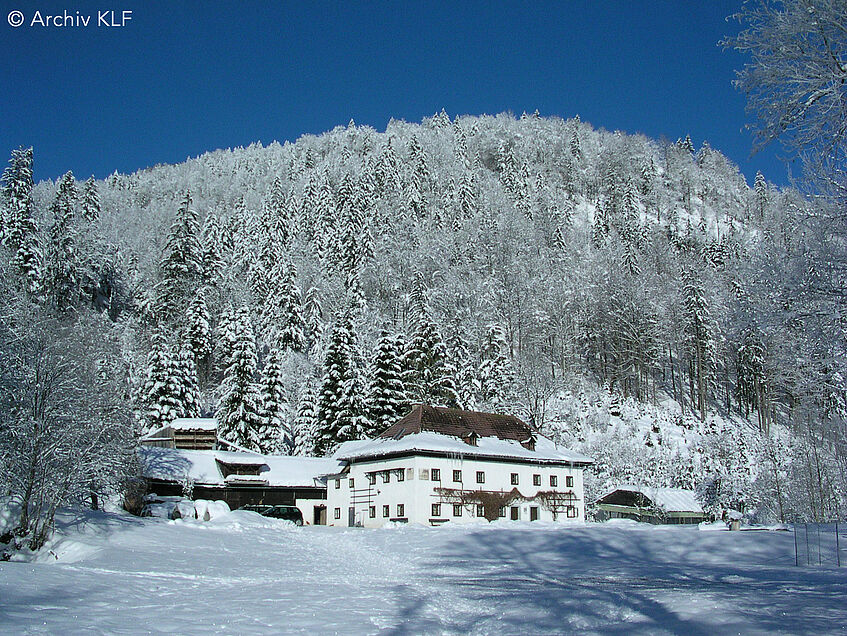The history of the Konrad Lorenz Research Station

When Konrad Lorenz retired from his directorship at the German Max Planck Society's Institute for Behavioural Physiology at Seewiesen in 1973, at the age of 70, he returned to Austria and searched for a place where he could continue the research with his semi-tame flock of greylag geese. Otto König introduced Konrad Lorenz to HM Ernst August (Duke of Cumberland), who invited him to Grünau. Buildings were adapted, ponds created and soon Lorenz and coworkers started to move the geese from Seewiesen to Grünau. However, nearly 10 years passed until the local flock stabilised again.
The first years of Lorenz' research were still funded by the German Max Planck Society. The Austrian Academy of Sciences took over the payments in 1980. Aside from geese, social development was investigated in other birds, but also in beavers and wild boars. When Konrad Lorenz died in February 1989, the future of the KLF first looked bleak. But starting with July 1990, the Konrad Lorenz Research Station (KLF) continued to operate because of the joint effort of Prof. John Dittami (University of Vienna) and the Government of Upper Austria.
